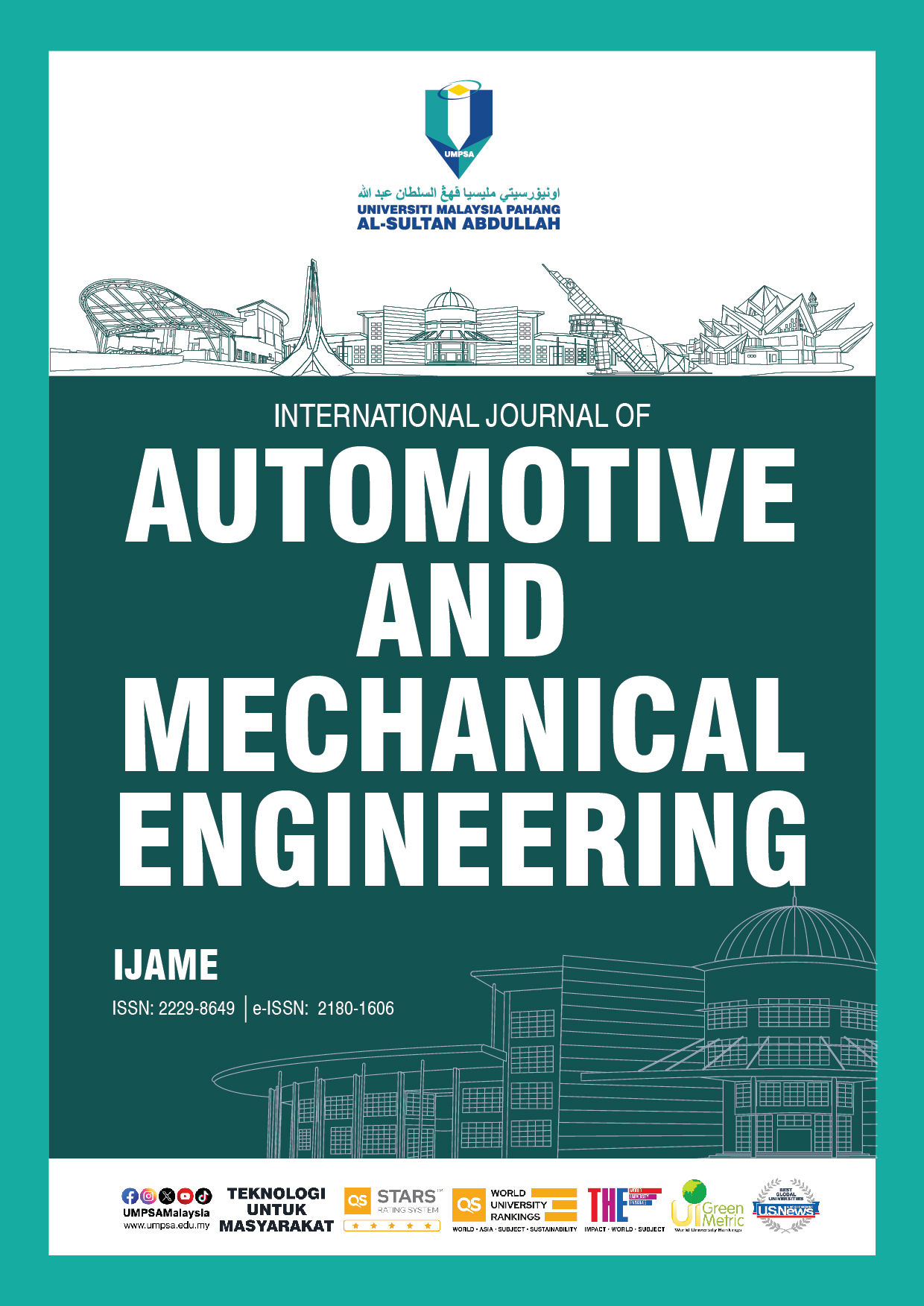CT-FEA of Inhomogeneous Lumbar with Different Loadings of the Spinal Cage
DOI:
https://doi.org/10.15282/ijame.20.4.2023.07.0842Keywords:
Spinal cage, Interbody fusion implant, Finite element analysis, Spinal fusionAbstract
Interbody fusion has recently been successfully used to treat degenerative spinal instability. Without needing to test it in vitro, finite element analysis (FEA) was used to reflect the biomechanical interaction between lumbars and cages. However, the complex geometry of the lumbar region was not accurately modeled by the numerous studies that relied on homogenous, simplified models. This study aims to fill this knowledge gap by creating an inhomogenous lumbar model and using computed tomography finite element analysis (CT-FEA) to assess the biomechanical characteristics of a spinal cage implanted in the model. CT images were used to create a 3D inhomogenous lumbar model of L4-L5. In order to assess the biomechanical characteristics of the implanted cage, a spinal cage was inserted between the lumbar model, and the model was subjected to FEA with loads ranging from 500 N to 1200 N. As the load applied to the assembled model varied from 500 N to 1200 N, the results showed that the maximum principal's stress increased. With values of 12.33 MPa and 0.102 Pa, respectively, the von Mises stress for a load of 500 N had the lowest maximum and minimum values. At 1200 N of force, the highest stress was indicated by the maximum and minimum values of the Von Mises Stress, which were 30.37 MPa and 0.244 Pa, respectively. The stress distribution demonstrated that the inhomogeneous lumbar model was applicable and that using FEA could produce promising results. The significance of taking into account the spinal cages' biomechanical characteristics in non-homogeneous lumbar models is shown by this study. CT-FEA can be a valuable tool for assessing the biomechanical characteristics of spinal cages in non-homogeneous lumbar models. The significance of taking into account the spinal cages' biomechanical characteristics in non-homogeneous lumbar models is shown by this study.
Downloads
Published
Issue
Section
License
Copyright (c) 2023 The Author(s)

This work is licensed under a Creative Commons Attribution-NonCommercial 4.0 International License.







